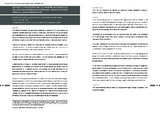Mostrar el registro sencillo del ítem
Origen y evolución de la imagen geográfica del centro histórico de Córdoba: investigación para su caracterización
| dc.contributor.author | Ramírez López, Luisa | |
| dc.contributor.author | López Casado, David | |
| dc.contributor.author | Naranjo-Ramírez, J. | |
| dc.contributor.author | Torres-Márquez, Martín | |
| dc.date.accessioned | 2012-11-21T12:14:28Z | |
| dc.date.available | 2012-11-21T12:14:28Z | |
| dc.date.issued | 2012 | |
| dc.identifier.uri | http://hdl.handle.net/10396/8256 | |
| dc.description.abstract | En el Plan de Ordenación del Territorio de Andalucía2 (en adelante POTA), las Estrategias de Desarrollo Territorial constituyen su núcleo central, pues contienen las líneas de actuación necesarias para la consecución del Modelo propuesto. Uno de los cuatro grandes bloques en que se contienen estas estrategias hace referencia al llamado Sistema Regional de Protección del Territorio, siendo el Sistema del Patrimonio Territorial una de sus principales líneas maestras. Componentes de dicho Sistema son, entre otros, las ciudades históricas protegidas como Conjuntos Históricos, cual es el caso de la ciudad de Córdoba, parte de cuyo casco fue declarado en 1994 Patrimonio de la Humanidad por la UNESCO. Uno de los retos actuales de los centros históricos es hacer convivir sus señas de identidad seculares con los embates del sector turístico, y con las corrientes que abogan por una “modernización” y adaptación a los momentos actuales. El objeto de nuestro trabajo es, en primer lugar, perfilar los rasgos esenciales de la imagen geográfica que, en el pasado, el centro histórico de Córdoba despertó en viajeros y visitantes para contrastar, en un segundo momento, esta realidad con aquellos elementos que los habitantes del centro histórico de Córdoba perciben en la actualidad como claves para preservar su carácter y tradición histórica. Al respecto presentamos el estudio que se está realizando para caracterizar dicha imagen. Para ello proponemos como marco epistemológico el de la Geografía de la Percepción que, desde los años 60 del s. XX, aportara Kevin Lynch, convencidos de su aplicabilidad como apoyo a la redacción de los documentos de planeamiento vinculados con los bienes patrimoniales. La oportunidad del estudio se deriva de las anunciadas intenciones del Ayuntamiento de Córdoba de modificar el Plan Especial de Protección del Conjunto Histórico de la ciudad. Ocasión, por tanto, inmejorable para intentar contrastar los resultados que se deriven de la tramitación oficial, con los que se presentarían aplicando dicha metodología. | es_ES |
| dc.description.abstract | In the Spatial Planning Plan of Andalusia (POTA, approved by Decree 206/2006, of 28 November), the Territorial Development Strategies constitute the core, because it comprises the necessary action lines in order to attain the proposed model. One of the four blocks which they are contained in, make reference to the so-called Regional System of Territorial Protection, being the Territorial Heritage System one of the main points. Components of the mentioned System are, between others, the historic cities considered as Cultural Heritage, which is the case of Cordoba, whose old quarter was declared World Heritage in 1994 by the UNESCO. One of the challenges of these old quarters is living together in accordance with their age-old hallmarks and the ravages of the tourism sector, and also with the currents that plead for a “modernization” and an adaptation to new times. The aim of the essay is, first of all, shaping the essential features of the image -geographical image- that travellers and visitors could have in the past from the old quarter of Cordoba, to contrast them with the elements perceived by their residents, as keys to maintain its nature and historical tradition. On this matter, the ongoing study is being presented to characterize this image. We suggest an epistemological framework developed by Kevin Lynch from the 60’s to the present day called Geography of Perception. We are convinced of its applicability in the drafting of documents as a support to Planning linked to patrimonial assets. The opportunity of the study derives from the intentions expressed by the City Council of Cordoba of modifying the Specific Plan made for the Old Quarter of the city. This is, therefore, an excellent opportunity to contrast the results which were obtained by the official proceedings using the methodology indicated above. | es_ES |
| dc.format.mimetype | application/pdf | es_ES |
| dc.language.iso | spa | es_ES |
| dc.rights | https://creativecommons.org/licenses/by-nc-nd/4.0/ | es_ES |
| dc.source | En: Actas del II Congreso Internacional Ciudades Históricas Patrimonio Mundial Córdoba, 23 al 26 de abril de 2012, p. 402-417 | es_ES |
| dc.subject | Plan de Ordenación Territorial de Andalucía (POTA) | es_ES |
| dc.subject | Imagen Geográfica | es_ES |
| dc.subject | Patrimonio | es_ES |
| dc.subject | Espacio Subjetivo | es_ES |
| dc.subject | Centro Histórico de Córdoba | es_ES |
| dc.subject | Spatial Planning Plan of Andalusia (POTA) | es_ES |
| dc.subject | Geographical Image | es_ES |
| dc.subject | Heritage | es_ES |
| dc.subject | Perceptions | es_ES |
| dc.subject | Old Quarter of Cordoba | es_ES |
| dc.title | Origen y evolución de la imagen geográfica del centro histórico de Córdoba: investigación para su caracterización | es_ES |
| dc.type | info:eu-repo/semantics/conferenceObject | es_ES |
| dc.rights.accessRights | info:eu-repo/semantics/openAccess | es_ES |

